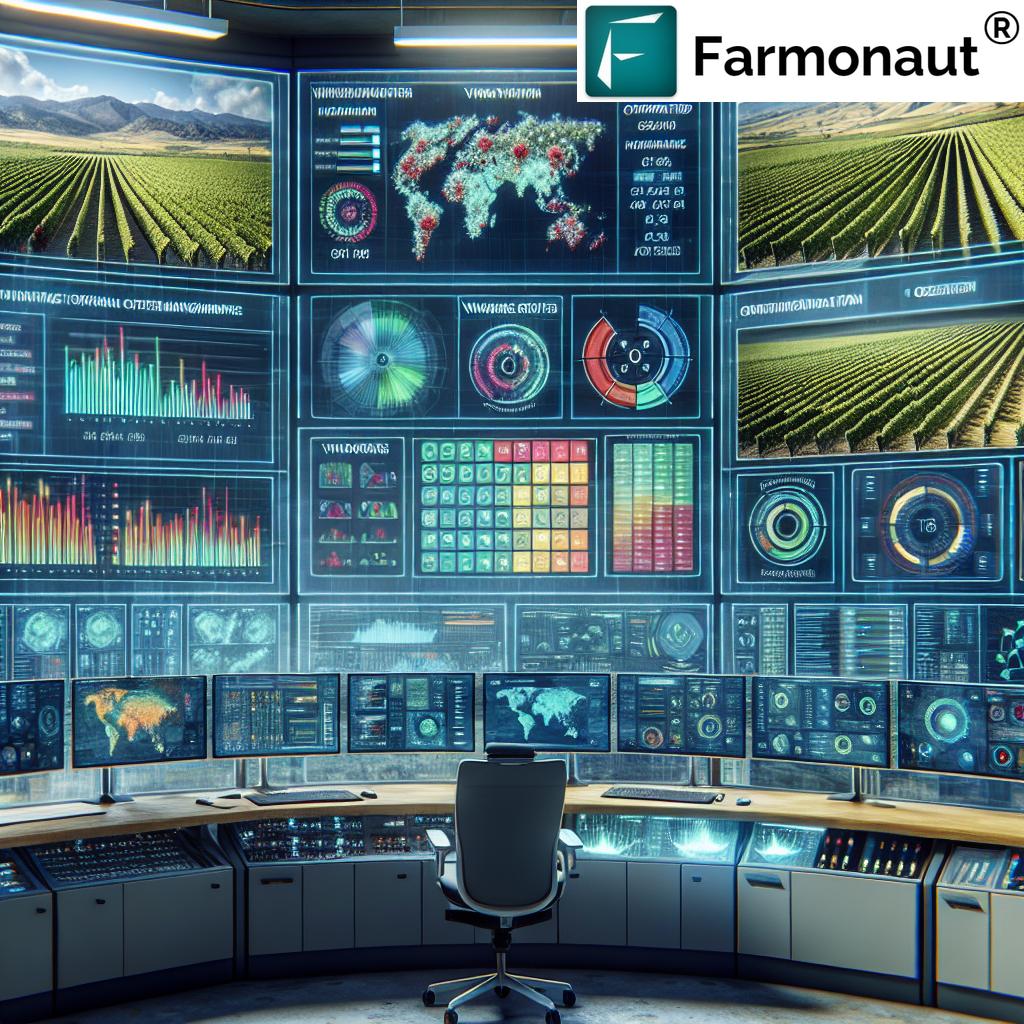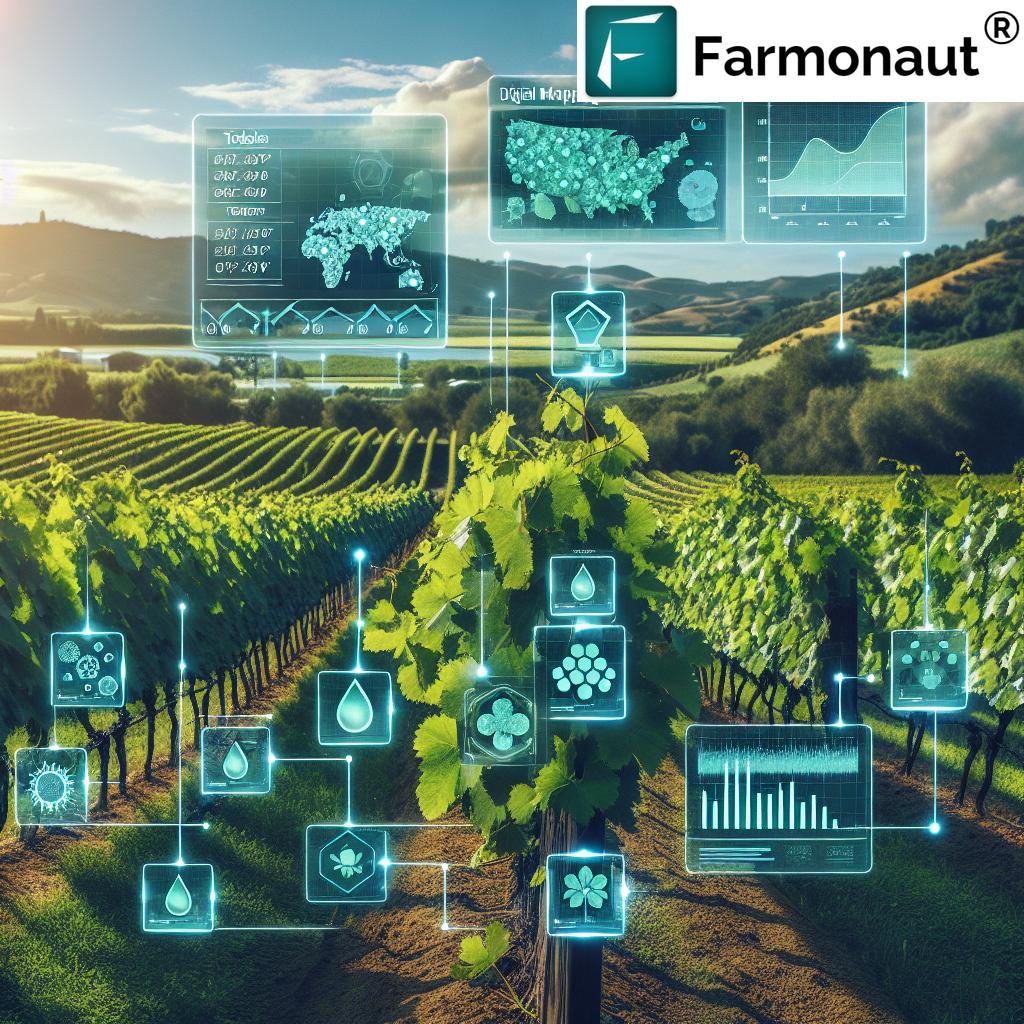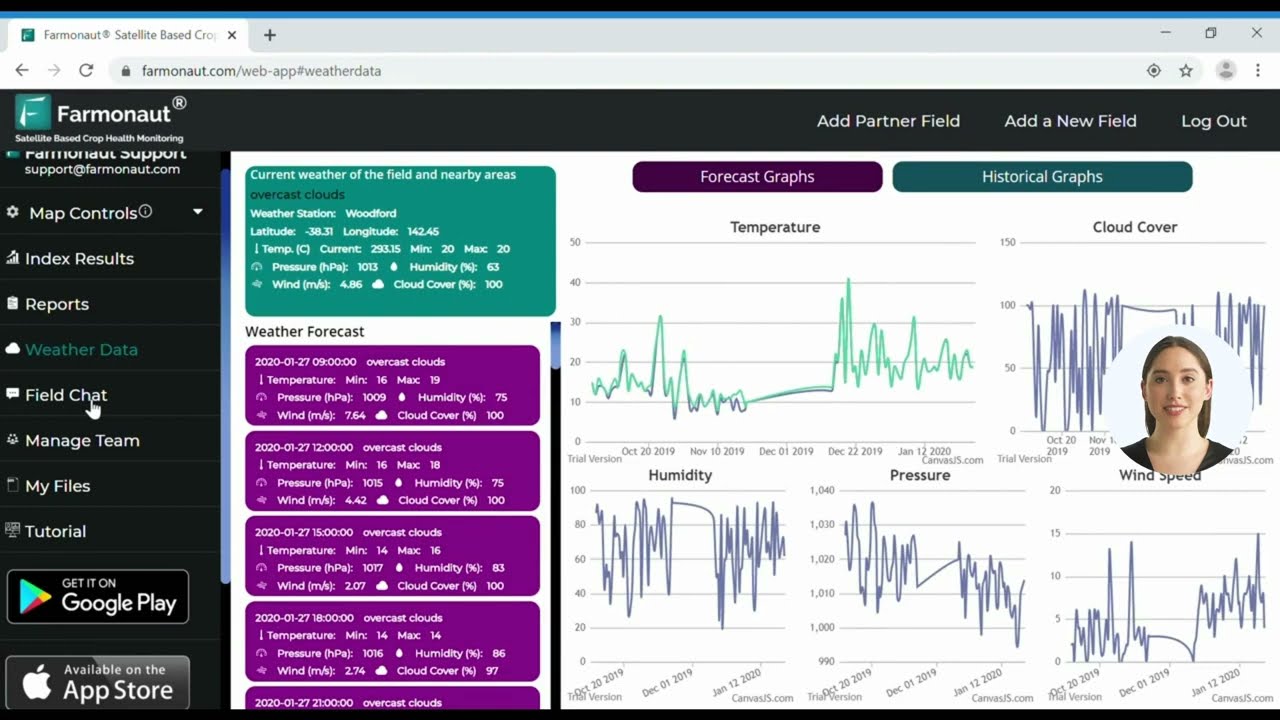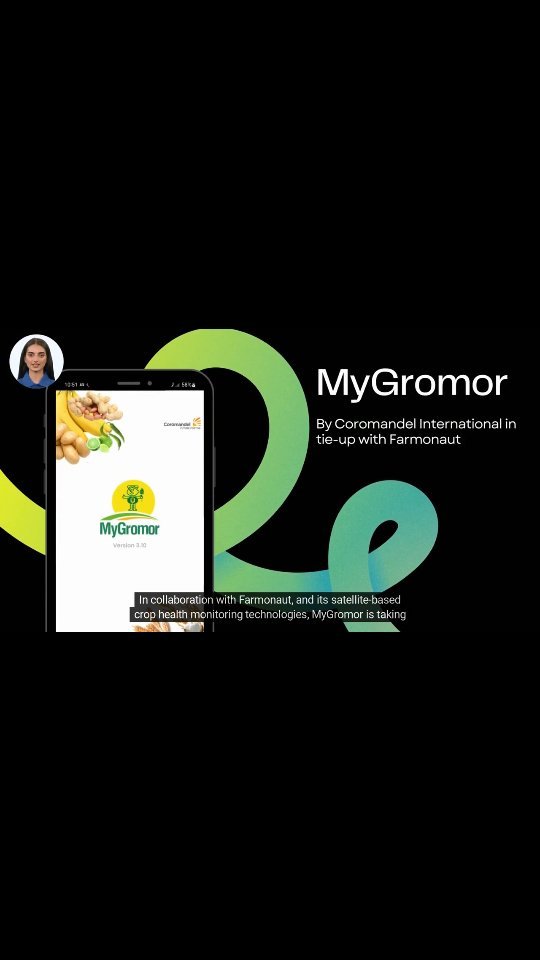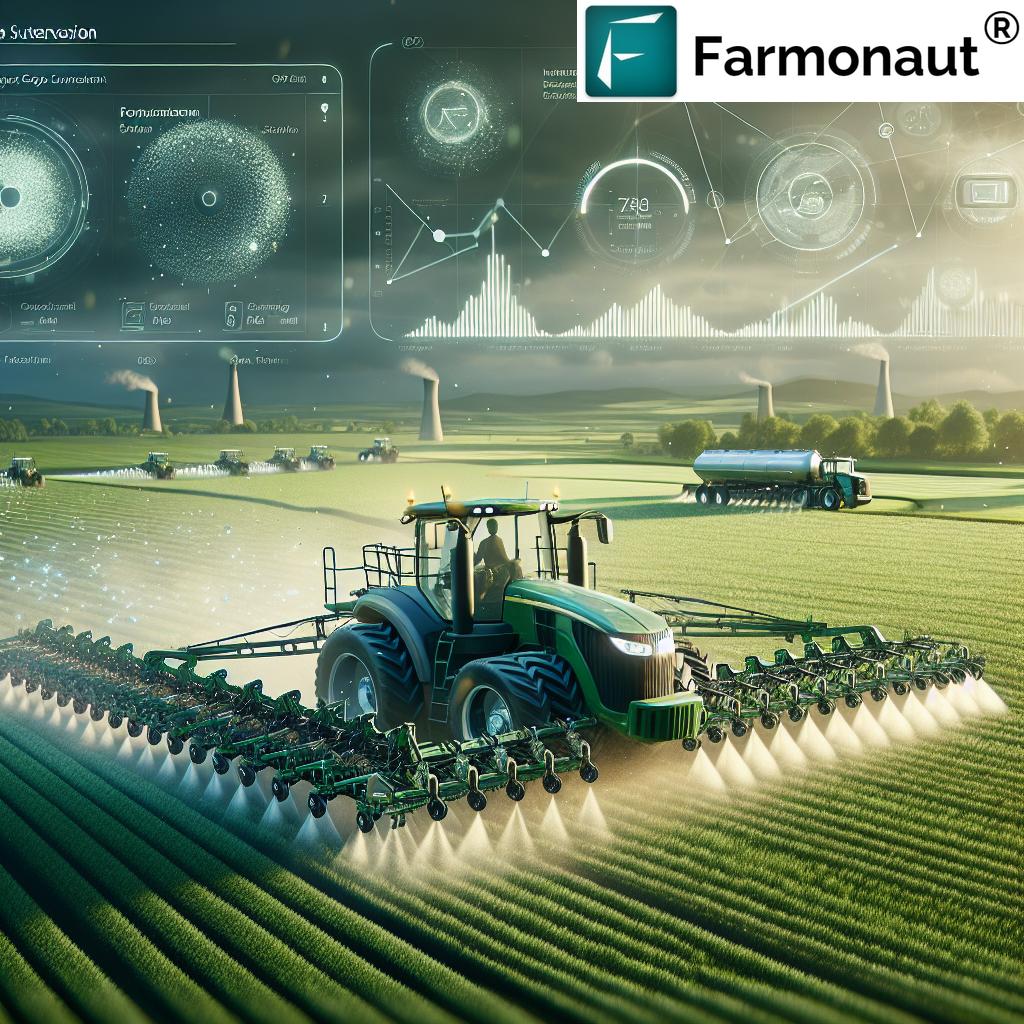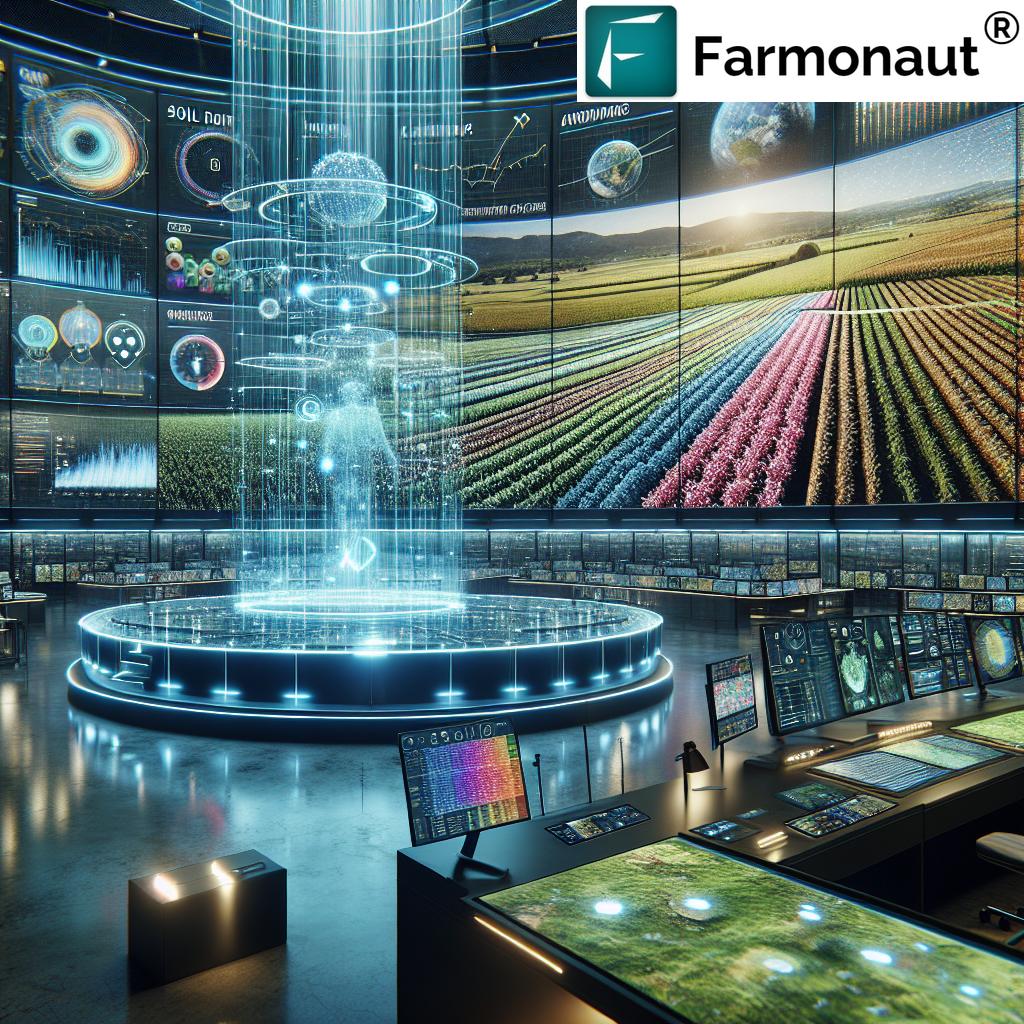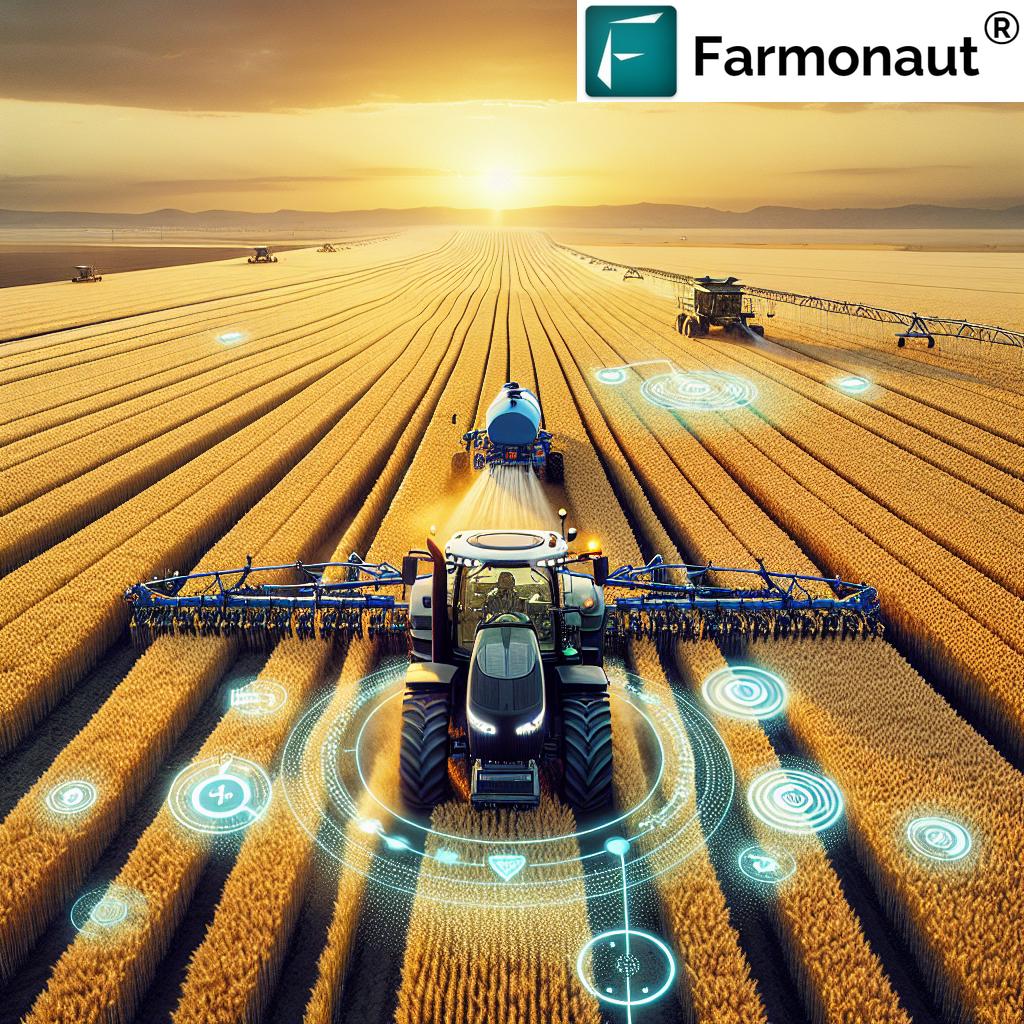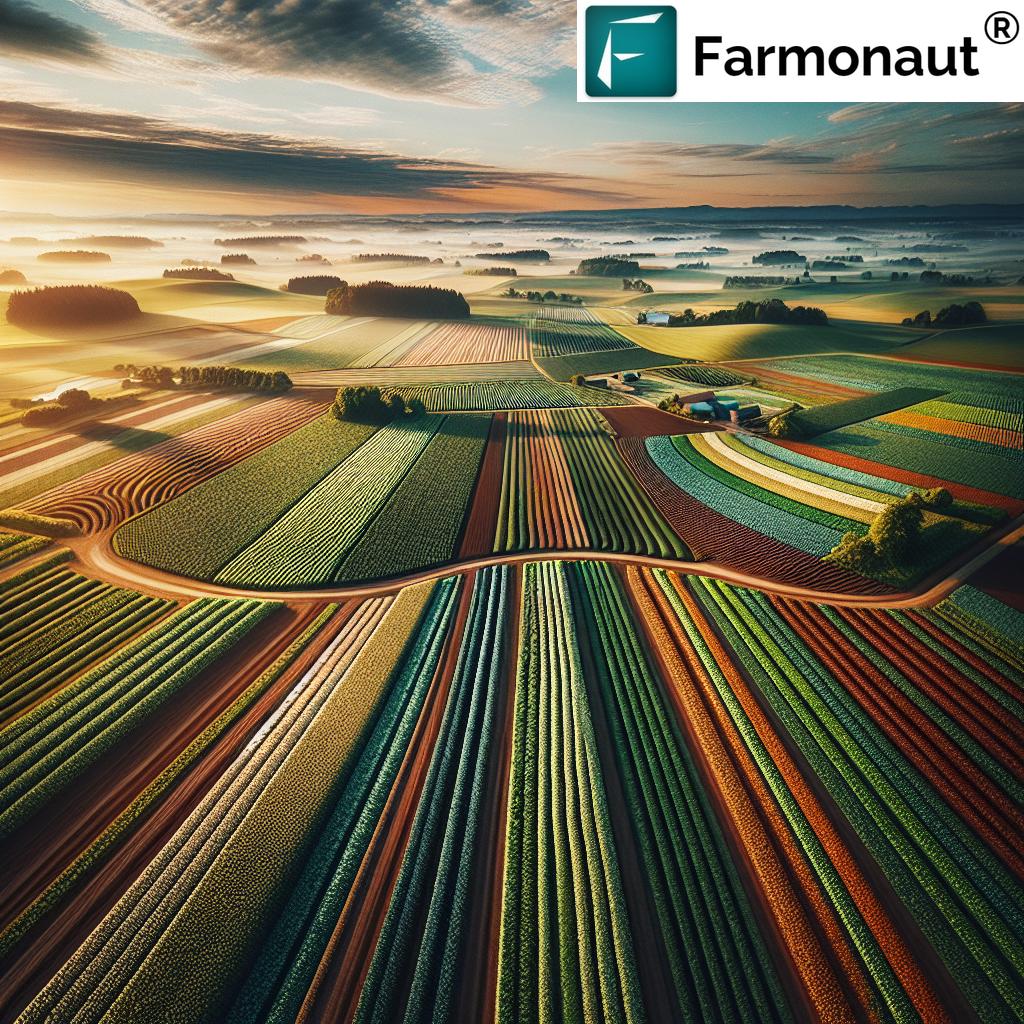Vineyard Management Software: 10 Hacks for Efficiency
“Vineyard management software can boost operational efficiency by up to 30% through real-time data analytics and task automation.”
Table of Contents
- Introduction: The Digital Transformation of Vineyards
- Key Features of Vineyard Management Software
- Feature Comparison Table: Efficiency Hacks in Vineyard Management
- 10 Efficiency Hacks Using Vineyard Management Software
- Benefits of Implementing Vineyard Management Software
- Choosing the Right Vineyard Management Software
- Farmonaut’s Solutions for Precision Viticulture Management
- FAQ: Vineyard Management Software and Modern Viticulture
- Conclusion: Future-Proofing Vineyards with Technology & Innovation
Introduction: The Digital Transformation of Vineyards
Vineyard management is at a turning point—advanced technology now shapes the core of efficient, profitable grape production. Key to this transformation is vineyard management software, integrating real-time viticulture data analytics, compliance management, resource tracking, and automation to streamline our daily operations. Leveraging these technology-driven tools not only helps us maintain regulatory standards and optimize every resource but also enables us to improve vineyard efficiency, make informed decisions, and consistently boost grape quality and profitability.
This comprehensive guide uncovers the 10 most impactful hacks—using vineyard management software—to enhance every aspect of our vineyard operations, from soil to bottle. Alongside, we’ll explore how Farmonaut’s satellite and AI-powered solutions further revolutionize precision viticulture technology—making advanced tools accessible, affordable, and effective for vineyards worldwide.
Read on as we detail innovative techniques, examples, and comparisons that help you propel your vineyard into modern operational excellence.
“Wineries using viticulture analytics report up to 25% higher grape quality and profitability compared to traditional methods.”
Key Features of Vineyard Management Software
Let’s dive deeper into the cornerstone features that make vineyard management software an indispensable ally for viticulture efficiency, compliance, and operational excellence.
-
Real-Time Data Collection and Analysis:
Leveraging powerful IoT sensors, modern vineyard management software continuously monitors environmental parameters such as soil moisture, temperature, humidity, and vine health. This data stream is analyzed in real time. It lets us assess microclimates, track grape maturity, and promptly identify issues such as pest infestations or nutrient deficiencies, empowering early, data-driven action. -
Vineyard Inventory Management:
Avoid costly shortages or overproduction via seamless tracking of stock, purchase orders, and sales orders. Streamlined communication with vendors and suppliers ensures quick procurement and proactive resource allocation. -
Automated Compliance for Vineyards:
Ensure regulatory compliance through built-in automated features that support easy creation of audit-ready reports, documentation tracking, and standards adherence across operations. -
Work Order Management & Scheduling:
With digital work order assignment, tracking, and cost analysis, we optimize workforce allocation, material needs, and equipment usage for every vineyard task. -
Irrigation and Spray Recommendations:
Leveraging weather analytics and Evapotranspiration (ET) algorithms, systems deliver automated recommendations—optimizing water usage and pest/disease management timing for healthier vines, less waste, and reduced costs. -
Labor and Material Costing:
Detailed tracking of work hours, material used, and equipment costs translates to granular cost control, budgeting, and higher profitability. -
Health and Safety Management:
Robust digital incident reporting, hazard mapping, safe workplace check-ins, and emergency plans mean safety compliance is intuitive and effective. -
Contractor and Biosecurity Management:
Streamline contractor qualification, induction, and on-site tracking while mapping risk areas to **implement and track biosecurity protocols**, crucial for protecting our vines and yield. -
Data and Financial Analytics:
Perform detailed yield, cost, and performance analysis—enabling proactive decision-making, precise resource allocation, and strategic planning.
Feature Comparison Table: Efficiency Hacks in Vineyard Management
Below, we’ve compiled a feature comparison table that quantifies the impact of vineyard management software on efficiency, costs, and productivity, aligning each hack with the key enabling feature.
| Efficiency Hack | Traditional Approach (Estimated Time/Cost) | With Software (Estimated Time/Cost) | Improvement (%) | Key Software Feature Used |
|---|---|---|---|---|
| Pest & Disease Tracking | Weekly manual field checks (6 hrs/week) High labor costs |
Automated sensor alerts & spatial mapping (1 hr/week) | ~85% Time Saved 60% Lower Costs |
Real-Time Data Collection, Analysis, IoT Monitoring |
| Yield Monitoring | Seasonal manual sampling (10+ hrs, subjective) | Automated satellite yield estimation (2 hrs, objective) | ~80% Faster More Accurate |
Satellite-Based Analytics, Data Dashboards |
| Irrigation Management | Manual scheduling, visual assessment ($300/month wasted on overwatering) | Algorithm-driven ET recommendations ($60/month saved) | ~80% Cost Saved | Automated Irrigation Recommendations, Weather Data |
| Compliance Reporting | Manually compiling logs & paperwork (15+ hrs/month) | Automated digital report generation (1 hr/month) | 93% Faster | Automated Compliance & Reporting Tools |
| Inventory Management | Physical stocktaking (risk of shortages/overages) | Live inventory dashboards, automated alerts | 75% Reduced Errors | Vineyard Inventory Management Module |
| Labor & Material Costing | Manual spreadsheet tracking, prone to error | Automated entry & real-time cost reports | 60% Time Saved 30% Fewer Errors |
Digital Work Orders, Costing Analytics |
| Spray Schedule Optimization | Fixed/calender-based, not data-driven | Weather/pest forecast-driven automation | 50% Chemical Use Cut | Integrated Weather & Pest Analytics |
| Contractor & Biosecurity Tracking | Paper records, ad-hoc oversight | Digital access control & incident mapping | 90% Higher Compliance | Contractor Management, Biosecurity Protocols |
| Work Order Planning | Verbal scheduling, manual logs | Centralized, mobile-access work order management | 70% Time Saved | Work Order Automation & Scheduling |
| Resource Allocation | Estimation-based, risk of under- or overspending | AI-resource prediction & automated allocation | 85% More Precise | Advanced Data & Financial Analytics |
10 Efficiency Hacks Using Vineyard Management Software
1. Real-Time Data Collection and Analysis
Harnessing the power of IoT sensors and satellite-based solutions, we gain a constant stream of environmental data, including soil moisture, temperature, humidity, and vine health. This data is analyzed in real time, enabling us to assess microclimates and grape maturity across our blocks, spot early signs of pest infestations or nutrient deficiencies, and initiate corrective actions—all before small problems escalate.
Platforms like Farmonaut’s satellite monitoring solution elevate this further by delivering NDVI-based vegetation health, AI-driven alerts, and customizable dashboards directly to our mobile devices or web apps. This not only improves grape quality monitoring, but also makes our decision-making more informed, rapid, and proactive.
2. Vineyard Inventory Management
Nothing disrupts vineyard operations quite like stock shortages or overproduction. With strong inventory management tools, we seamlessly track stock levels, purchase orders, and sales orders. Automated notifications alert us of low inventory; intelligent analytics help analyze usage rates, seasonality, and stock turnover.
This level of efficiency in vineyard inventory management enables us to optimize procurement schedules while maintaining optimal resource levels. Vendor communication becomes streamlined, and all procurement processes are logged—removing ambiguity and last-minute scrambles.
3. Automated Compliance and Reporting for Vineyards
Adhering to regulatory standards and compliance requirements is non-negotiable. Advanced vineyard management software automates the creation of audit-ready reports, tracks all compliance documentation, and alerts us to expiring permits or missing data.
Automated compliance for vineyards doesn’t just reduce the administrative burden on our staff. It decreases risk, ensures we stay on top of legal responsibilities, and enables us to demonstrate impeccable regulatory compliance during audits.
Tip: Consider integrating Farmonaut’s carbon footprinting module for additional environmental reporting and sustainability compliance.
4. Work Order Management and Scheduling
Planning and tracking work orders can be chaotic. Vineyard management software simplifies this by digitizing all task assignments, start/end dates, crew designations, and material/equipment usage. Each work order is tracked, costed, and mapped to ongoing operations.
Mobile access ensures our field crews receive instant updates. If weather shifts or priorities change, managers adjust in real time—maximizing labor efficiency, reducing downtime, and improving cost controls.
5. Smart Irrigation and Spray Recommendations
Water is one of the most vital (and costly) vineyard resources. Precision viticulture technology within management software analyzes weather forecasts, historical data, and soil sensor readings to issue smart, automated irrigation recommendations. We get clear guidance on when, where, and how much to water.
Similarly, for disease mitigation, the system analyzes environmental and pest risk factors to determine optimal spraying intervals—minimizing inputs, costs, and environmental impact.
Farmonaut empowers this with satellite-based soil moisture and vegetation health analytics, guiding more accurate irrigation and spray schedules for maximum efficiency and sustainability.
6. Labor and Material Costing—Real-Time, Detailed Analysis
Understanding the true costs of every task is essential for profitability. Digital tools track hours worked, materials and equipment used, and break down costs by task, block, or crew. This ongoing data collection supports accurate budgeting, financial planning, and timely allocation of resources.
With such transparency, we not only reduce wastage and cost overruns, but also identify high-performing teams and tasks—making vineyard work more strategic and profitable.
7. Health and Safety Management
Ensuring safety is so much more manageable when check-in questions, hazard mapping, and incident reporting are digitized and accessible on any mobile device. Emergency plans can be triggered from the same system, keeping everyone on our vineyard informed and protected.
This software-driven approach ensures we’re not only compliant with health and safety standards, but also developing a proactive, culture of safety that protects staff and productivity.
8. Contractor and Biosecurity Management
Managing external labor and contractors—and shielding our vines from biological threats—are easier than ever. Digital contractor management tools verify qualifications, conduct digital inductions, and track all on-site activity. Biosecurity modules map risk areas, prompt check-in questions, and track compliance.
This means potential threats (from unfamiliar personnel or invasive pests/diseases) are quickly identified, documented, and managed, fortifying the health and resilience of our vineyard at all times.
9. Proactive Biosecurity Measures
Protecting our vines from environmental and biological threats is paramount. Vineyard management software enables us to map potential risk areas, track compliance, and prompt biosecurity questions at every entry point. All activities are logged, making both spot audits and full tracebacks quick and painless—crucial for disease control and export certifications.
Consider employing Farmonaut’s blockchain-enabled traceability solutions to further safeguard product integrity across your supply chain.
10. Advanced Data & Financial Analytics
The real magic of vineyard management software lies in its integrated analytics. All operational, agronomic, and financial data are synthesized into easy-to-read dashboards, trend lines, and custom reports. We instantly visualize yield per hectare, cost per ton, forecasted vs actual output, and resource allocation.
Having this at your fingertips means every aspect of management—from daily task planning, to long-term capital investment—is informed by advanced, reliable analytics.
Interested in integrating satellite and weather data directly into your vineyard management platform?
Explore Farmonaut API and review our Developer Docs!
Benefits of Implementing Vineyard Management Software
- Improved Operational Efficiency: Automation and centralized data reduce manual errors, optimize workflow, and slash redundant tasks across all vineyard processes.
- Enhanced Decision-Making: Real-time analytics and AI-driven dashboards empower us to allocate resources where they’re needed most, improving grape quality and yield.
- Increased Profitability: By tracking resource usage, costs, and yields in detail, we identify inefficiencies, cut waste, and boost profit margins.
- Sustainability & Environmental Impact: Precision analytics ensure we minimize water, fertilizer, and pesticide use, supporting both profitability and environmental sustainability in vineyards.
- Regulatory Compliance: Built-in automated compliance features keep us audit-ready and in step with all current regulations and standards.
Choosing the Right Vineyard Management Software
Selecting an optimal platform is critical for effective adoption and maximizing ROI. When evaluating solutions, we recommend carefully considering the following:
-
Integration Capabilities: Can the software connect with your existing hardware (sensors, irrigation controllers, weather stations) and software (accounting, fleet tracking)?
Farmonaut’s API (learn more here) makes integration with your custom or legacy systems seamless. - User-Friendliness: Is the interface intuitive for both managers and field staff, including mobile functionality and multi-language support?
- Scalability: Will the platform grow with your business, supporting more blocks and advanced modules as your needs expand?
- Customer Support: Responsive, knowledgeable support is essential for onboarding, troubleshooting, and upgrades.
- Cost: Evaluate subscription and implementation fees relative to your vineyard’s size, goals, and projected ROI.
Tip: Make use of flexible, scalable solutions like Farmonaut’s large-scale farm management module for multi-site, multi-user environments.
Farmonaut’s Solutions for Precision Viticulture Management
At Farmonaut, we are committed to making precision agriculture affordable, accessible, and scalable. Our platform delivers a comprehensive suite of vineyard management tools for:
-
Real-Time Crop Health Monitoring:
Using satellite imagery and AI-powered analytics, we provide actionable insights on vegetation health, soil moisture, pest risks, and growth tracking. -
Resource Management Tools:
Optimize fleet movements and reduce logistical costs with fleet management. Learn more about smart fleet management features. -
AI-based Advisory System (Jeevn):
Receive tailored agronomic advice, weather forecasts, and disease alerts for proactive decision-making—all powered by the Jeevn AI Advisory System. -
Blockchain-Based Traceability:
Ensure supply chain transparency and product authenticity with end-to-end blockchain traceability. Supply your buyers and auditors with verifiable product histories. -
Carbon Footprinting & Sustainability:
Track, manage, and reduce your vineyard’s environmental impact using our carbon footprinting solution. Stay ahead in regulatory compliance and consumer-driven sustainability demands. -
Satellite Crop Loan & Insurance Verification:
Reduce fraud and access financing faster, thanks to satellite-verified field data. Read about satellite-based crop loan and insurance programs.
Our platform is available as a web app, Android and iOS mobile app, and developer API, so you can manage your vineyard operations on-the-go, or integrate our analytics with your existing systems.
FAQ: Vineyard Management Software and Modern Viticulture
What is vineyard management software and who should use it?
Vineyard management software is a set of digital tools designed to automate, track, and optimize vineyard operations—including field data collection, inventory, compliance, labor, and analytics. Any vineyard looking to improve efficiency, compliance, sustainability, and profitability should consider implementing these technology solutions.
How does viticulture data analytics improve vineyard efficiency?
Analytics provide us with actionable insights—such as when and where to irrigate, fertilize, or harvest—driven by real-time data. This reduces guesswork, cuts waste, and ensures every decision is data-driven, boosting per-acre yield and lowering costs.
Can vineyard management software help with regulatory compliance?
Yes. Automated compliance modules create audit-ready reports, track documentation, and alert users to missing or outdated permits—vastly reducing time spent on reporting and minimizing regulatory risks.
What is the cost/ROI of implementing such technology?
Costs vary but are typically offset by labor/time saved, input reduction, and yield/profit gains. Most vineyards see a return on investment within one to two seasons due to increased operational efficiency and improved grape quality.
How do Farmonaut’s solutions enable environmental sustainability in vineyards?
By leveraging satellite data and AI, Farmonaut empowers precision irrigation, input optimization, and carbon footprint tracking—supporting sustainable, profitable practices and compliance with environmental standards.
Is Farmonaut only for large vineyards?
Absolutely not. Farmonaut serves individual smallholder farmers, larger agribusinesses, and even governments. With robust scalability, its services and tools are accessible and cost-effective for vineyards of all sizes.
Can I integrate Farmonaut’s data with my own software?
Yes! Farmonaut’s open API and developer documentation make integration with third-party or custom platforms straightforward, enabling centralized command and control.
Conclusion: Future-Proofing Vineyards with Technology & Innovation
As the viticulture industry evolves, embracing vineyard management software is no longer optional—it is essential for competitive, profitable, and sustainable vineyard operations. From data collection, advanced analytics, compliance automation, to resource optimization, these tools empower us to consistently raise the bar for efficiency, grape quality, and operational excellence.
Platforms like Farmonaut embody this technological leap, blending sophisticated satellite remote sensing, AI, and blockchain into affordable, intuitive solutions for vineyards worldwide. Let us lead the way towards a smarter, greener, and more profitable future in viticulture—integrate technology at every stage and watch your business flourish.


